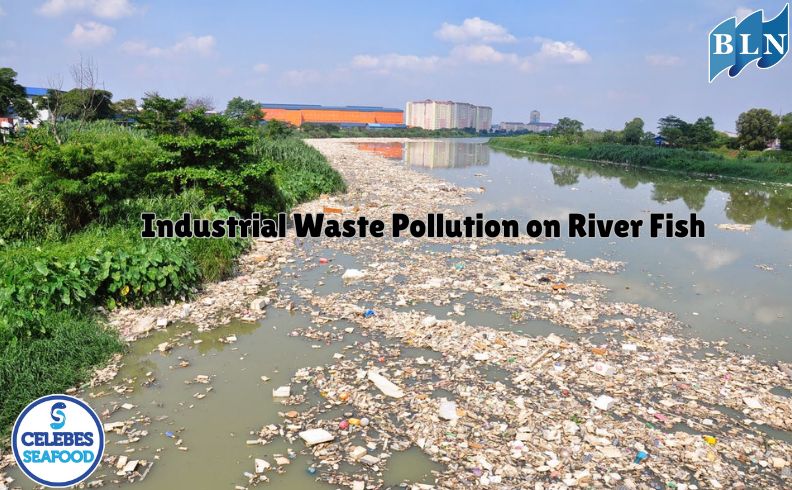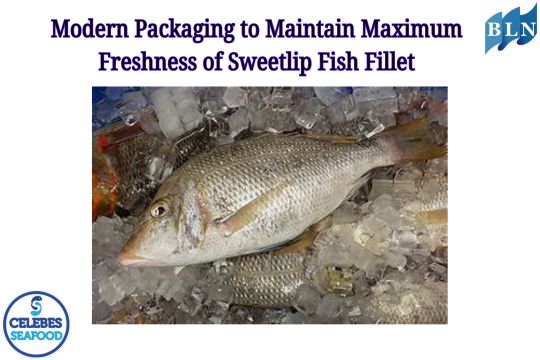Industrial Waste Pollution on River Fish
By. Azizah - 14 May 2025
lautnusantara.comRivers are vital freshwater ecosystems for life, including various types of fish. However, uncontrolled industrial activities often generate waste that pollutes rivers, leading to significant negative impacts on fish populations and the overall ecological balance. This article will review the various impacts of industrial waste pollution on river fish.
Types of Industrial Waste and Their Contents
Industrial waste varies greatly depending on the type of industry. Some common types of waste that pollute rivers include:
- Organic Waste: Originating from the food and beverage, pulp and paper, and livestock industries. Its main content is organic matter that can cause a decrease in dissolved oxygen (DO) levels in the water during the decomposition process by microorganisms.
- Inorganic Waste: Originating from the chemical, mining, and metal processing industries. This waste can contain heavy metals (such as mercury, lead, cadmium, chromium), strong acids, strong bases, and other toxic inorganic compounds.
- Thermal Pollution: Originating from power plants and some industrial processes that use water as a coolant. Increased water temperature can reduce dissolved oxygen levels and disrupt the metabolism of aquatic organisms.
- Hazardous and Toxic Waste (B3): Includes various synthetic chemical compounds, solvents, pesticides, and radioactive waste that are very harmful to the environment and the health of organisms.
Direct Impacts on Fish
Industrial waste pollution can have direct and lethal impacts on river fish:
- Mass Mortality: High concentrations of toxic substances in waste can cause sudden death in fish populations. Heavy metals, cyanide, and other hazardous chemical compounds are very toxic to the physiological systems of fish.
- Internal Organ Damage: Long-term exposure to low concentrations of pollutants can cause damage to vital organs of fish such as gills, liver, kidneys, and nervous system. This can disrupt normal physiological functions and reduce the ability of fish to survive and reproduce.
- Reproductive Disorders: Some pollutants can disrupt the endocrine system of fish, which regulates reproductive hormones. This can lead to decreased egg and sperm production, fertilization failure, and abnormalities in the development of larvae and juvenile fish.
- Disease and Vulnerability: Fish exposed to industrial waste often experience a decrease in their immune system, making them more susceptible to bacterial, fungal, and parasitic diseases.
- Behavioral Changes: Certain pollutants can affect fish behavior, such as their ability to forage, avoid predators, and migrate. These disruptions can reduce the survival chances of fish in the wild.
Indirect Impacts on Fish
In addition to direct impacts, industrial waste pollution can also indirectly affect fish through changes in their living environment:
- Decrease in Dissolved Oxygen (DO) Levels: Organic waste decomposed by microorganisms consumes oxygen in the water. A significant decrease in DO can cause hypoxia (oxygen deficiency) and mass fish deaths.
- Changes in Water pH: Acidic or alkaline waste can drastically change the pH of river water. pH changes outside the tolerance limits of fish can cause stress, gill damage, and death.
- Eutrophication: Excess nutrients (nitrates and phosphates) from agricultural and industrial waste can trigger excessive algal growth (algal blooms). When algae die and decompose, this process consumes oxygen and can create dead zones in the river.
- Habitat Degradation: Sedimentation from mining waste and erosion due to deforestation around industrial areas can cover river substrates that are important for fish spawning and foraging.
- Food Chain Disruption: Pollution can affect other organisms in the river food chain, such as plankton and aquatic invertebrates. A decrease in the population or contamination of these organisms can reduce the availability of food for fish.
Case Studies and Real Examples
Various studies have documented the negative impacts of industrial waste pollution on river fish in different parts of the world. For example, mercury pollution from illegal gold mining has caused mercury accumulation in the bodies of fish in several rivers in Indonesia, endangering the health of humans who consume them. Pollution from textile factory waste containing dyes and heavy metals has also been reported to cause fish deaths and ecosystem changes in several rivers in Java.
Mitigation and Prevention Efforts
Preventing and reducing the impact of industrial waste pollution on river fish requires comprehensive action from various parties:
- Strict Regulations: Governments need to implement and enforce strict regulations regarding industrial waste management, including water quality standards and sanctions for violators.
- Effective Waste Treatment: Industries must have and operate effective waste treatment systems to eliminate or reduce the content of pollutants before discharge into rivers.
- Regular Water Quality Monitoring: Routine monitoring of river water quality is necessary to detect pollution early and evaluate the effectiveness of control efforts.
- Use of Environmentally Friendly Technology: Encouraging the use of cleaner production technologies that generate less waste.
- River Ecosystem Restoration: Efforts to restore river habitats damaged by pollution, such as greening riverbanks and cleaning up sediment.
- Increased Public Awareness and Participation: Educating and involving the public in efforts to maintain river cleanliness and report any indications of pollution.
If you are interested in our , MILKFISH WHOLE ROUND, Goldband Snapper Fillet Skinless, BARRAMUNDI COD WOLE GILLED GITTED / WHOLE ROUND, GOAT FISH BUTTERFLY SKIN ON please do not hesitate to contact us through email and/or whatsapp.
.jpg)



.jpg)



